Pumping your bike is an essential skill to have if you want to maintain or gain speed over rolling terrain or even to help you get over some obstacles. A pump track is the best place to learn this skill. Not everyone has a pump track available, in that case, any type of roller or set of rollers will work to learn the technique of pumping your bike.
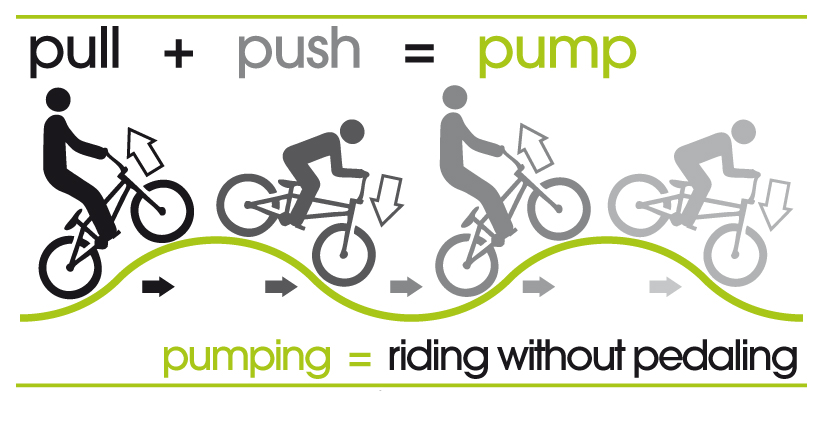
The graphic above is a simple diagram showing how to pump through a set of rollers. What is missing in the diagram is the leg action you also must do combined with the pulling and pushing you do with your arms. The images below will more clearly demonstrate how the arms and legs are used together to create the forces needed to maintain and even gain more speed as you go through rollers all while not needing to pedal your bike.
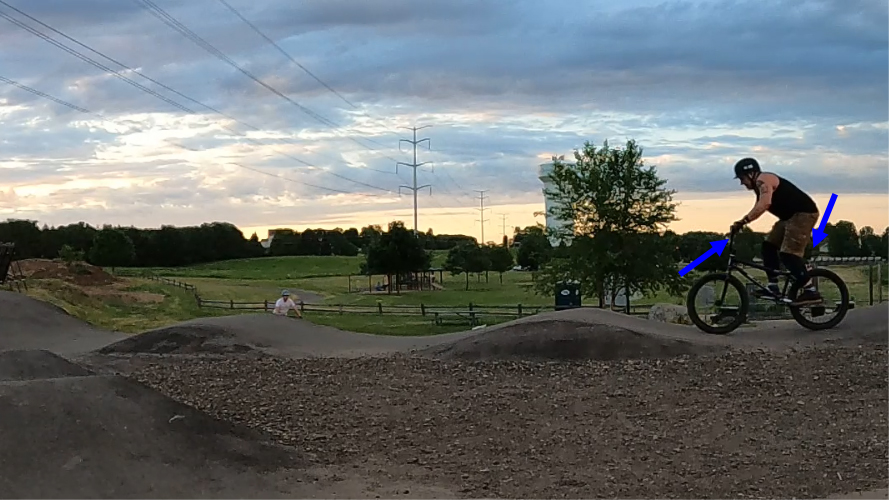
As you approach the face of the roller you want to start pulling with your arms and pushing with your legs.
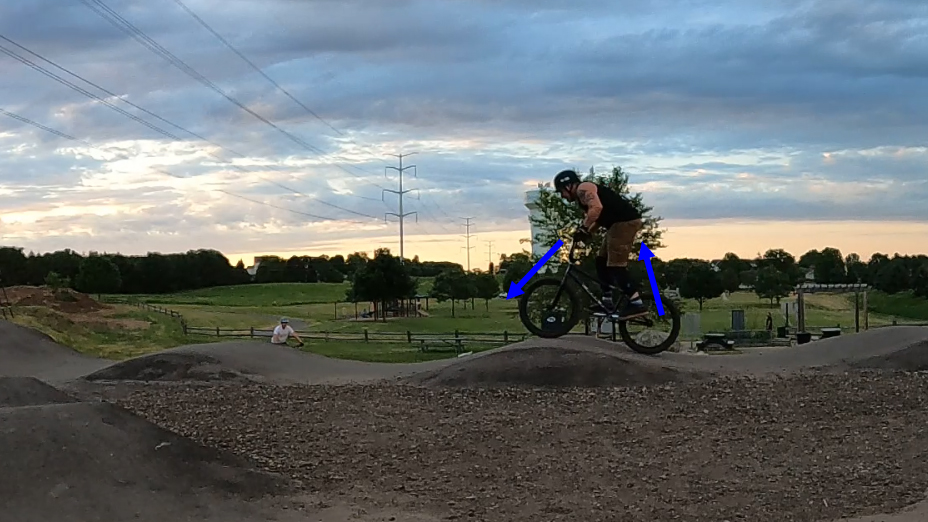
As your front tire crests the top of the roller you want to start pushing down with your arms and absorbing with your legs.
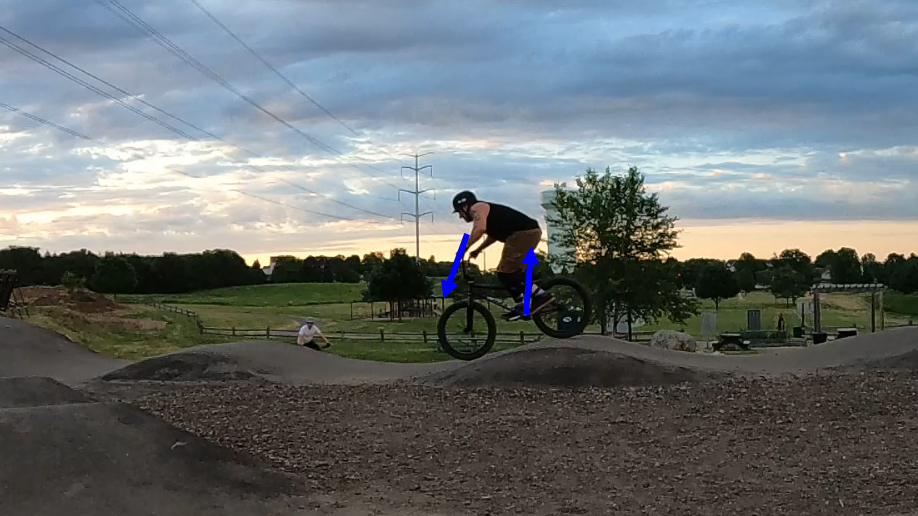
Continue to push with your arms while allowing your legs to absorb the roller.
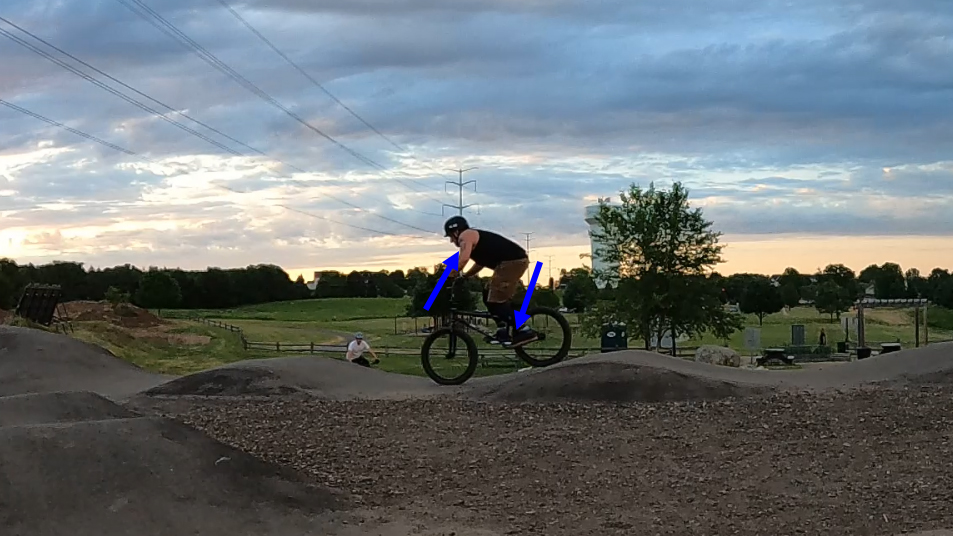
As your rear wheel crests the top of the roller you want to start to push down with your legs while you start to pull up with your arms.
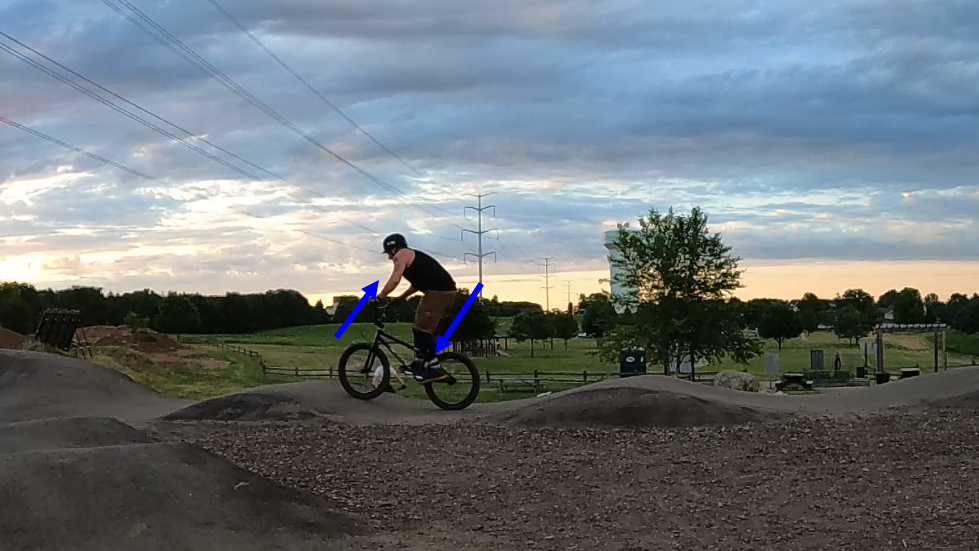
Continue pushing with your legs all the way through the downside of the roller while pulling with your arms.
This technique described above is what I like to call “Row and Anti-Row”. It comes from how you would use a rowing machine. On a rowing machine, you sit down on a sliding seat and grab the handles. As you pull on the handles you push with your legs. This is called the row and on a bicycle, this pitches the front end up and brings the rear wheel down. When you get to the far back position on a row machine you now push with your arms and relax your legs allowing your knees to bend so the seat slides forward. The is called the anti-row and on a bicycle, it pitches the front end down and allows the back end to come up.
It’s important to note that I say allow or absorb with your legs as the rear wheel comes up. The reason is that you can’t pull up the back of the bike with your legs. This is the part most people struggle with most. It takes them a while to understand, especially when learning to bunnyhop, that they don’t actually pull up the back end of the bike, they allow the back end to come up and it’s the arms that actually cause the bike to come up off the ground. When learning to pump, it’s important to understand where the power is coming from to make the bike go forward. The only power that is being applied is the downward push, first with your arms and then later with your legs.
So then why do you pull up with your arms and absorb with your legs? The reason you pull up with your arms as the front of the bike starts to come up the front side of the roller is so you unweight the front end of the bike. This prevents the bike from being slowed down by the forces applied to the front wheel by the upward direction it must go. As we all know with physics, things going uphill slow down. By pulling up on the front of the bike you are essentially taking away the forces slowing the bike down so this helps maintain your forward momentum. The same applies to your legs, but unfortunately, you can’t pull the back of the bike up with your legs, all you can do is relax your knees to allow the back wheel to come up over the roller. If you continue to push down with your legs or do nothing as the rear wheel is coming up the front side of the roller the bike will want to slow down. So the idea is you want to maintain momentum by absorbing the rear wheel as it comes up the front side of the roller.
While pumping your bike through rollers you always want to maintain opposite forces between the front and rear of the bike. This is why thinking of it as rowing and anti-rowing help you understand the motions better.
So where do the speed and acceleration come from if you are not pedaling? This is due to the downward push you first do with your arms and then later with your legs. As you push down with your handlebars as your front wheel goes down the backside slope of the roller, the energy of the downward force has to go somewhere. The only place that energy can go is forward, thus as you push down it actually accelerates the bike. If you don’t push down, gravity will naturally cause the wheel to roll down the slope. By pushing down, you actually are assisting gravity to get the wheel to go down the slope faster.
By combining the unweighting of the front wheel while pushing down with your legs creating forward acceleration with the rear wheel you allow the bike to gain more speed. Reversing those motions as the front wheel goes down the slope and rear wheel comes up, you are accelerating the front wheel as you unweight the rear wheel to allow the bike to continue gaining speed. So basically you have two opportunities to gain speed through rollers. First with your legs and then later with your arms.
It’s all about the timing. This takes some practice. Start out by going at a medium speed. Don’t go into the rollers super fast or you risk being bucked off the bike if your timing is off. Focus on when your front wheel comes up the front side of the roller. Gently pull up on the bars to help the front wheel come up the front side of the roller. As the front wheel crests the roller, push down and slightly forward on the bars and relax your legs so the rear wheel can come up. Your knees should come up closer to your chest as the rear wheel comes up over the top of the roller. Once your rear wheel crests the top of the roller and your front wheel gets to the bottom of the backside, reverse your motions and start pulling back and up with your arms and pushing down with your legs. Once you get the timing of these two motions down, you will actually start to feel the bike accelerate forward slightly. It might take a few tries, but you will know as soon as your timing is correct.
Once you start to get the timing down, you can start pulling and pushing harder and faster and the next thing you know is that you will start to go too fast. This is when you find your rhythm and can just keep the bike going indefinitely or until you get tired.